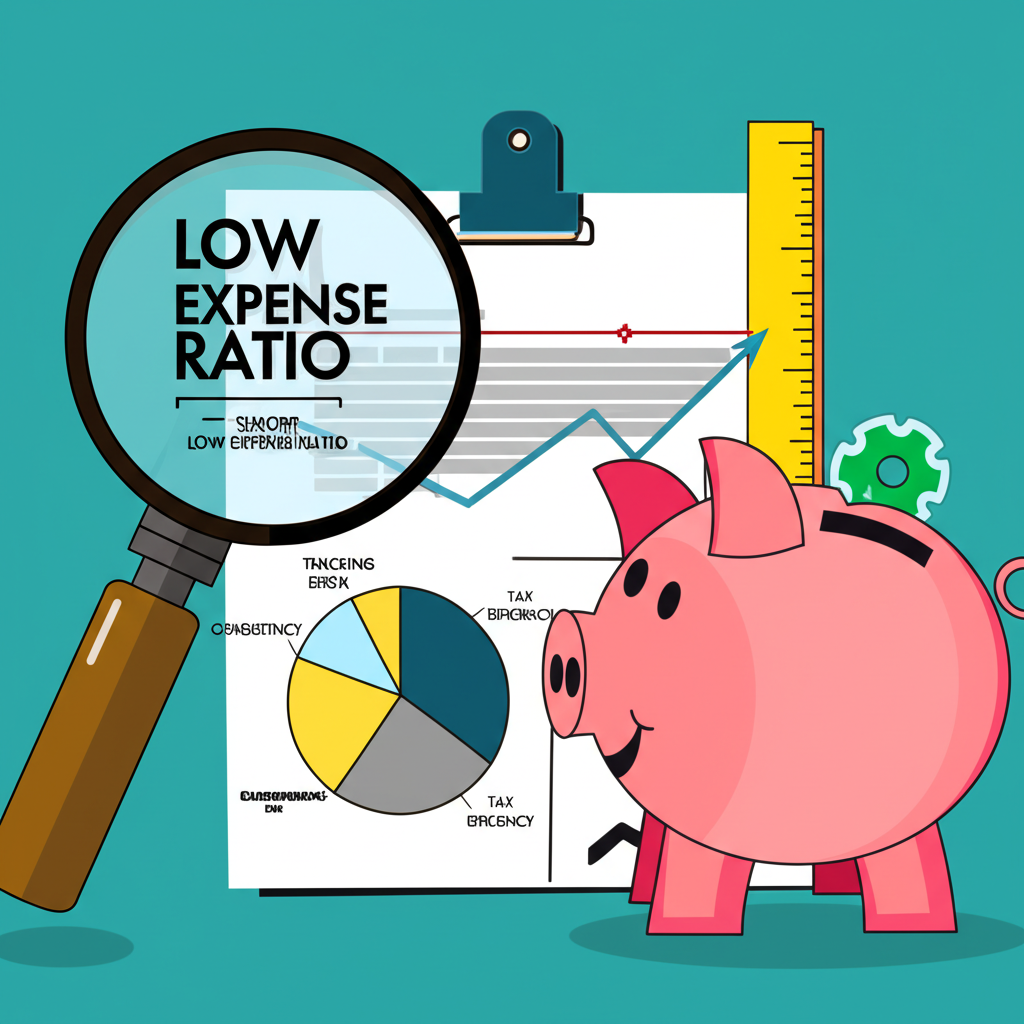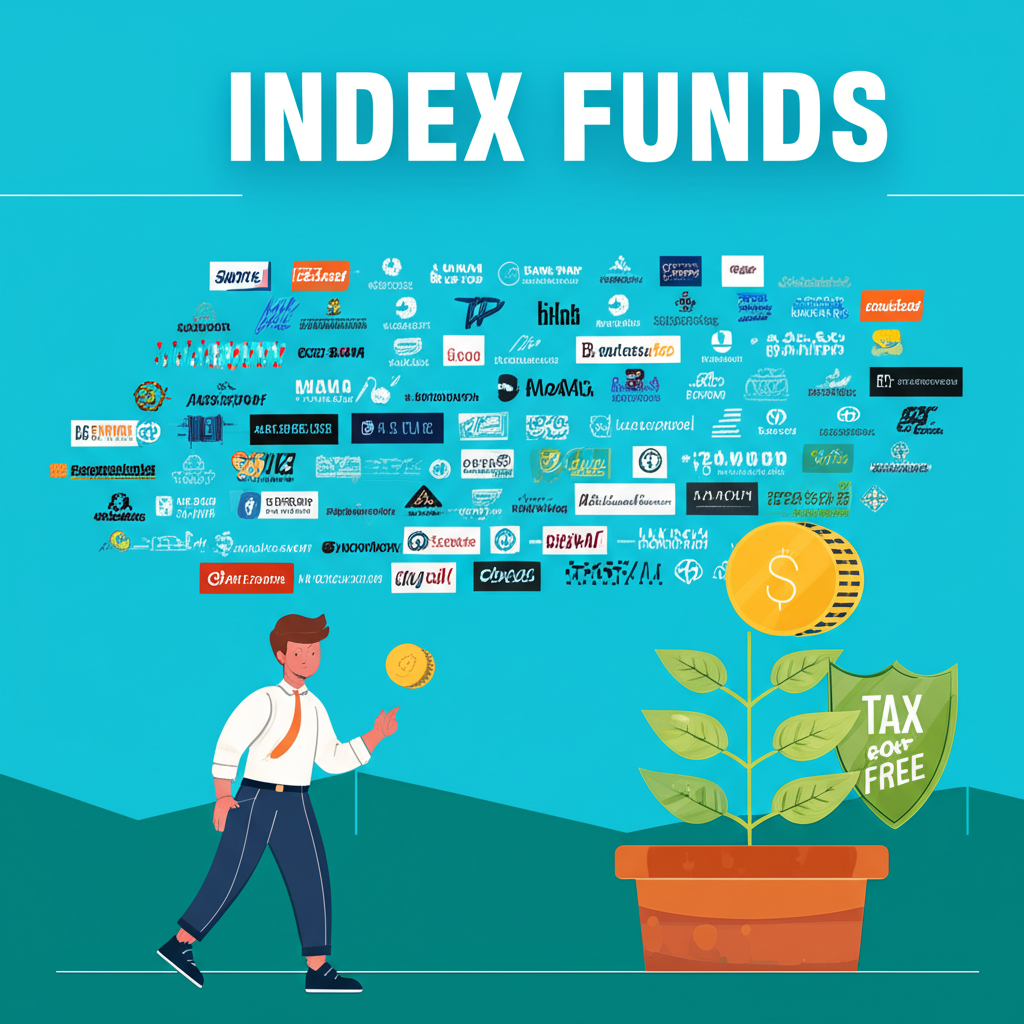Introduction: Understanding the Power of Index Funds

Amid the overwhelming array of investment choices, index funds emerge as a clear and accessible route to long-term wealth building. Designed to mirror the performance of a specific market benchmark, they cut through the noise of stock picking and market timing. With broad market exposure, minimal fees, and a hands-off management approach, index funds have become a go-to strategy for both new and experienced investors. Whether you’re planning for retirement or growing your savings, gaining insight into the most effective index funds is essential for constructing a strong and resilient portfolio.
What sets this guide apart is its focus on real-world applicability—breaking down not just which funds perform well, but why they do and how to integrate them into your personal financial plan. We’ll explore the core metrics that define strong performance, highlight top choices across different asset classes, and examine the wisdom of investing legends like Warren Buffett. You’ll also learn how to get started, optimize your holdings within tax-advantaged accounts such as Roth IRAs, and position yourself for success in the evolving landscape of passive investing.
What Makes an Index Fund “Best Performing”?

When people refer to the “best performing” index funds, it’s tempting to focus solely on historical returns. But true performance isn’t just about past gains—it’s about sustainability, cost efficiency, and reliability over time. A fund that delivers strong net returns year after year isn’t necessarily the one with the highest peak—it’s the one that consistently tracks its benchmark while minimizing drag from fees and operational flaws.
Key factors that define a high-performing index fund include:
- Expense Ratio: This is the annual fee charged by the fund, deducted directly from your returns. Even a tiny difference—say, 0.03% versus 0.50%—can cost tens of thousands over decades due to compounding. Lower is nearly always better.
- Tracking Error: This measures how closely the fund follows its target index. A low tracking error means the fund accurately reflects market movements, ensuring you capture the returns you expect.
- Long-Term Consistency: Performance isn’t just about one strong year. The best funds maintain alignment with their index across market cycles—over five, ten, or twenty years.
- Diversification: Funds that hold hundreds or thousands of securities reduce the risk tied to any single company’s failure, spreading exposure across sectors and market caps.
- Tax Efficiency: Because index funds buy and sell infrequently, they generate fewer capital gains distributions. This means fewer taxable events, especially valuable in taxable accounts.
These elements work together to enhance your net return. It’s not about chasing the hottest number—it’s about choosing a fund built for endurance, where every percentage point saved in fees compounds into meaningful growth.
Key Benefits of Investing in Index Funds

Index funds offer a rare combination: simplicity, affordability, and strong long-term results. Their passive structure isn’t just convenient—it’s strategically advantageous. Here’s why so many investors rely on them:
- Broad Market Exposure and Diversification: By tracking a major index like the S&P 500 or the total U.S. stock market, you instantly gain ownership in hundreds of companies. This broad base cushions your portfolio against the volatility of individual stocks.
- Lower Fees and Expense Ratios: With no need for expensive research teams or active trading, index funds operate at a fraction of the cost of actively managed funds. Those savings go straight to your returns—year after year.
- Simplicity and Ease of Management: You don’t need to analyze earnings reports or time the market. Once your funds are selected, maintenance is minimal. This frees you from constant monitoring and emotional decision-making.
- Tax Efficiency: Low portfolio turnover means fewer capital gains distributions. In taxable accounts, this can result in higher after-tax returns compared to actively traded funds.
- Consistent Performance: Over decades, broad market indexes have outperformed the majority of actively managed funds. By aligning with the market, you capture its growth without betting on individual winners.
These advantages aren’t theoretical—they’ve been validated by decades of market data and endorsed by some of the most successful investors in history. For most people, index funds provide the most reliable path to growing wealth over time.
How to Choose the Right Index Fund for Your Goals

Choosing the right index fund isn’t about finding the single “best” option—it’s about finding the best fit for your financial picture. Your time horizon, risk tolerance, and investment goals should guide your decisions. Let’s break down the most important considerations.
Expense Ratios: The Silent Killer of Returns
Of all the factors, the expense ratio has the most measurable impact on your long-term results. It’s the annual fee charged by the fund, and it’s deducted directly from your investment. A fund with a 0.50% expense ratio will cost you five times more than one at 0.10%, and that difference compounds dramatically over time.
Consider this: According to a study by the SEC, a $100,000 investment with a 1.5% fee would lose nearly $30,000 more over 20 years than the same investment with a 0.5% fee. For index funds, aim for ratios below 0.10%, and ideally as close to zero as possible. Providers like Vanguard, Fidelity, and Schwab lead the way with ultra-low-cost options.
Tracking Error: How Closely Does It Follow the Index?
Even a well-structured fund can fall short if it doesn’t track its index accurately. Tracking error quantifies the difference between the fund’s return and the index’s return. A high tracking error suggests poor management or structural inefficiencies—like excessive cash holdings or trading delays.
While no fund is perfect, the best performers maintain minimal deviation. For broad market funds, tracking errors should typically be under 0.05%. This ensures your investment behaves as expected, delivering the market return minus only the expense ratio.
Fund Provider and Reputation
Who manages the fund matters. Established providers like Vanguard, Fidelity, and Schwab have built their reputations on low-cost, reliable index products. They offer strong customer support, transparent fee structures, and a wide range of investment options.
When evaluating a provider, consider:
- Minimum investment requirements—some funds now offer zero minimums.
- Availability of ETFs and mutual funds.
- Integration with retirement accounts and automated investing tools.
Choosing a trusted provider increases your confidence in the fund’s long-term stability and service quality.
Investment Goals and Risk Tolerance
Your personal situation should shape your fund selection:
- Long-Term Growth (e.g., Retirement): Focus on broad U.S. stock market funds like the S&P 500 or total market index funds.
- Diversification: Add international index funds to reduce reliance on the U.S. economy and capture global growth.
- Capital Preservation (e.g., Near Retirement): Incorporate bond index funds to reduce volatility and provide income.
- Risk Tolerance: Be honest about how much market fluctuation you can handle. Even diversified funds can drop 20% or more in a downturn—stay aligned with your comfort level.
Top-Performing Index Funds by Category
To help you make informed decisions, here’s a curated list of top-tier index funds across major categories. These funds are selected based on low expense ratios, strong tracking records, and broad investor appeal. *Note: Historical performance does not guarantee future results. Data is illustrative and may vary.*
S&P 500 Index Funds
The S&P 500 is a cornerstone of U.S. equity investing, representing 500 of the largest publicly traded companies. It’s widely seen as a bellwether for the overall market.
| Fund Name (Ticker) | Provider | Expense Ratio | Illustrative 10-Year Avg. Annual Return |
|---|---|---|---|
| Vanguard S&P 500 ETF (VOO) | Vanguard | 0.03% | ~12.5% |
| iShares Core S&P 500 ETF (IVV) | BlackRock | 0.03% | ~12.5% |
| Fidelity 500 Index Fund (FXAIX) | Fidelity | 0.015% | ~12.6% |
| Schwab S&P 500 Index Fund (SWPPX) | Schwab | 0.02% | ~12.5% |
Total Stock Market Index Funds
These funds go beyond the S&P 500 to include small- and mid-cap stocks, offering exposure to the entire U.S. equity market. This provides even greater diversification.
| Fund Name (Ticker) | Provider | Expense Ratio | Illustrative 10-Year Avg. Annual Return |
|---|---|---|---|
| Vanguard Total Stock Market ETF (VTI) | Vanguard | 0.03% | ~12.0% |
| iShares Core S&P Total U.S. Stock Market ETF (ITOT) | BlackRock | 0.03% | ~12.0% |
| Fidelity ZERO Total Market Index Fund (FZROX) | Fidelity | 0.00% | ~12.1% |
International Stock Index Funds
Global diversification is key to reducing home-country bias. These funds provide access to developed and emerging markets outside the U.S., capturing growth where it happens.
| Fund Name (Ticker) | Provider | Expense Ratio | Illustrative 10-Year Avg. Annual Return |
|---|---|---|---|
| Vanguard Total International Stock ETF (VXUS) | Vanguard | 0.07% | ~5.0% |
| iShares Core MSCI Total International Stock ETF (IXUS) | BlackRock | 0.07% | ~5.0% |
| Fidelity Total International Index Fund (FTIHX) | Fidelity | 0.06% | ~5.1% |
Bond Index Funds
Bond funds help stabilize a portfolio, especially as you near retirement. They provide income and reduce volatility compared to stocks.
| Fund Name (Ticker) | Provider | Expense Ratio | Illustrative 5-Year Avg. Annual Return |
|---|---|---|---|
| Vanguard Total Bond Market ETF (BND) | Vanguard | 0.03% | ~1.0% |
| iShares Core U.S. Aggregate Bond ETF (AGG) | BlackRock | 0.03% | ~1.0% |
Sector-Specific or Growth Index Funds (Optional for advanced diversification)
For investors seeking targeted exposure, sector-specific funds (e.g., technology, healthcare) or growth-oriented indexes exist. Examples include the Vanguard Growth ETF (VUG) or the Fidelity NASDAQ Composite Index Fund (FNCMX). However, these come with higher concentration risk and should only make up a small portion of a well-diversified portfolio.
Index Funds vs. ETFs vs. Actively Managed Mutual Funds
Understanding the differences between investment vehicles is crucial. While the terms are sometimes used interchangeably, there are distinct structural and practical differences.
| Feature | Index Mutual Fund | Index ETF | Actively Managed Mutual Fund |
|---|---|---|---|
| Management Style | Passive (tracks index) | Passive (tracks index) | Active (fund manager picks stocks) |
| Trading | Trades once per day after market close (based on Net Asset Value) | Trades throughout the day like stocks | Trades once per day after market close |
| Expense Ratios | Typically very low | Typically very low | Generally much higher |
| Minimum Investment | Often has minimums ($1,000-$3,000+) | Can buy single shares (no minimum beyond share price) | Often has high minimums ($1,000-$5,000+) |
| Tax Efficiency | High (low turnover) | Very high (low turnover, favorable creation/redemption mechanism) | Lower (high turnover can lead to capital gains distributions) |
| Flexibility | Good for dollar-cost averaging and automated investing | Good for intraday trading, limit orders | Less flexible, subject to manager’s strategy |
Index mutual funds and ETFs are both passive investments designed to track an index. The main difference is in how they’re traded: ETFs trade like stocks and offer intraday pricing, while mutual funds settle at the end of the day. Many investors use ETFs for flexibility and mutual funds for automated investing.
Actively managed funds rely on professional managers to pick securities and beat the market. But this comes at a cost—higher fees and, historically, underwhelming results. According to S&P’s SPIVA reports, most actively managed funds fail to outperform their benchmarks over ten-year periods, especially after fees.
Historical Performance & The Power of Compounding
One of the most persuasive arguments for index fund investing is the historical track record of broad market indexes. While past performance isn’t a guarantee, it reveals a powerful truth: consistent growth over time can turn modest investments into substantial wealth.
Since its inception, the S&P 500 has delivered average annual returns of about 10% to 12%, even after major downturns like the 2008 financial crisis and the 2020 pandemic shock. When dividends are reinvested, that growth compounds exponentially.
Scenario Analysis: The $5,000 S&P 500 Investment
Let’s say you invested $5,000 in an S&P 500 index fund on January 1, 2004, and left it untouched for 20 years. Assuming a conservative average annual return of 10%:
- Initial Investment: $5,000
- Annual Return: 10%
- Investment Period: 20 years
Using the compound interest formula:
$5,000 × (1 + 0.10)^20 = $33,637.50
That single investment would grow to nearly $34,000—more than six times its original value—without requiring any additional effort. This is the power of compounding and market alignment in action.
Investing with a Vision: Insights from Warren Buffett
No advocate for index funds carries more weight than Warren Buffett. Despite his success in active investing, he has repeatedly urged most people to invest in low-cost S&P 500 index funds.
His reasoning is grounded in realism and long-term thinking:
- Market Efficiency: Buffett acknowledges that most professionals can’t consistently beat the market. For the average investor, the odds are even worse.
- Diversification: An S&P 500 fund offers instant exposure to 500 leading U.S. companies, minimizing the risk of individual stock failure.
- Low Costs: He famously said that high fees are “the silent killer of returns.” Index funds eliminate this drag.
- Long-Term Perspective: Buffett’s strategy is about patience. He sees index funds as a way to benefit from the enduring strength of the U.S. economy.
His decade-long bet against hedge funds—where a Vanguard S&P 500 fund outperformed a portfolio of elite hedge funds—proved his point decisively. It remains one of the most compelling case studies in passive investing.
Optimizing Your Investments: Index Funds for Roth IRAs and Other Accounts
Choosing the right fund is only part of the equation. Where you hold it can dramatically affect your after-tax returns.
Roth IRAs: A Powerful Combination for Index Funds
A Roth IRA allows your investments to grow completely tax-free, and qualified withdrawals in retirement are also tax-free. This makes it an ideal home for high-growth assets like index funds:
- Tax-Free Growth: Over 30 or 40 years, even a modest investment can grow into a large sum—all of it accessible tax-free in retirement.
- No Capital Gains Tax: Since all trades within the account are tax-exempt, the tax efficiency of index funds is amplified.
- Flexibility: You can withdraw your contributions (not earnings) at any time without penalty, offering some liquidity.
For Roth IRAs, broad market funds like VTI, FXAIX, or VXUS are excellent choices.
Other Account Types:
- Traditional IRA/401(k): These offer tax-deferred growth—deductible contributions today, taxed upon withdrawal. Index funds thrive here too, benefiting from compounding without annual tax hits.
- Taxable Brokerage Accounts: Index funds are still ideal due to low turnover. However, dividends and capital gains will be taxed annually, so consider holding tax-efficient funds.
Decide between Roth and Traditional accounts based on your current and expected future tax bracket.
Getting Started: Your Step-by-Step Guide to Investing in Index Funds
Starting your index fund journey is simpler than it seems. Follow these steps to begin building wealth with confidence:
- Define Your Investment Goals: Are you saving for retirement, a home, or education? Your goal will shape your timeline and risk level.
- Choose a Reputable Brokerage: Top platforms include Vanguard, Fidelity, Schwab, and M1 Finance—known for low fees and strong fund selection.
- Open an Investment Account:
- Retirement: Open a Roth IRA (tax-free growth) or Traditional IRA (tax-deferred).
- General Investing: Open a taxable brokerage account.
The process is fully online and usually takes minutes.
- Fund Your Account: Link your bank and transfer money. Set up recurring deposits to automate your investing.
- Select Your Funds: Start with a simple mix—like a total stock market fund (VTI or FZROX) and an international fund (VXUS). Add bonds (BND) if you want stability.
- Place Your Order:
- Mutual Funds: Enter the dollar amount to invest.
- ETFs: Enter the number of shares.
Many brokerages allow automatic investments—use this feature.
- Monitor and Rebalance: Check your portfolio annually. If your stock/bond ratio has drifted, rebalance to stay aligned with your goals.
Risks and Considerations When Investing in Index Funds
No investment is risk-free. While index funds are among the safest and most reliable options, it’s important to understand their limitations:
- Market Risk: If the market drops, your fund drops too. There’s no manager to shift assets and avoid losses.
- No Outperformance: You won’t beat the market—only match it. This is a feature, not a flaw, but it’s worth noting.
- Tracking Error: Small deviations can occur, though they’re usually negligible in well-run funds.
- Concentration Risk (Niche Funds): Sector-specific funds can be volatile. Stick to broad indexes unless you’re making a deliberate tactical choice.
- Long-Term Horizon Required: Short-term volatility is normal. Selling during a downturn locks in losses and breaks the compounding engine.
Manage these risks by staying diversified, investing consistently, and maintaining a long-term focus.
The Future of Index Investing: Trends and Outlook for 2025 and Beyond
Index investing is evolving rapidly. As we move toward 2025 and beyond, several trends are shaping the next generation of passive investing:
- Continued Growth: Assets in index funds and ETFs are expected to keep rising as investors prioritize low costs and transparency.
- Expansion into New Areas: Expect more index funds focused on ESG criteria, alternative assets, and smart-beta strategies—all in low-cost wrappers.
- Technology Integration: Robo-advisors will further simplify portfolio management, and blockchain may enhance fund transparency and settlement speed.
- Global Diversification: As economies become more interconnected, international exposure will become even more critical.
- Hyper-Personalization: Tools like direct indexing may allow investors to own individual stocks that mirror an index, enabling advanced tax-loss harvesting and customization.
The future of index investing is bright—fueled by accessibility, cost savings, and intelligent design.
Conclusion: Build a Strong Financial Future with Index Funds
Index funds represent more than just a way to invest—they embody a philosophy of patience, simplicity, and market alignment. By minimizing fees, maximizing diversification, and harnessing the power of compounding, they offer most investors their best chance at long-term success.
Whether you’re investing in a Roth IRA, a 401(k), or a taxable account, the right index funds can serve as the foundation of your financial plan. The “best” fund isn’t the one with the highest return—it’s the one that aligns with your goals, keeps costs low, and tracks its index faithfully.
With discipline and a long-term mindset, index funds can help you turn consistent choices into lasting wealth.
What is the single best performing index fund to invest in right now?
There isn’t a single “best” index fund for everyone, as performance can vary and depends on individual goals and risk tolerance. However, broad market funds like S&P 500 index funds (e.g., VOO, FXAIX) and Total Stock Market index funds (e.g., VTI, FZROX) are consistently top recommendations due to their broad diversification, low costs, and historical long-term growth.
How has an investment of $5,000 in an S&P 500 index fund performed over the last decade?
While past performance doesn’t guarantee future results, a $5,000 investment in an S&P 500 index fund 10 years ago (assuming an average annual return of ~12% over that period) could have grown to approximately $15,529. This illustrates the significant power of compounding over time.
Which index fund provides the highest returns for long-term investors?
Historically, aggressive growth-oriented index funds or those focused on specific high-growth sectors (like technology) might show higher returns in certain periods. However, for most long-term investors, index funds tracking the broad U.S. stock market (S&P 500 or Total Stock Market) have provided excellent risk-adjusted returns due to their diversification and consistent growth.
What are Warren Buffett’s specific recommendations for index fund investors?
Warren Buffett famously recommends that most investors put their money into a low-cost S&P 500 index fund. He believes this strategy allows individuals to benefit from the overall growth of the U.S. economy without needing to pick individual stocks or pay high fees to active managers.
Can you list the top 5 best performing index funds over the past 10 years?
Identifying the “top 5” precisely depends on the exact 10-year period and criteria. However, consistently strong performers over the last decade have included:
- Vanguard S&P 500 ETF (VOO)
- Fidelity 500 Index Fund (FXAIX)
- Vanguard Total Stock Market ETF (VTI)
- iShares Core S&P 500 ETF (IVV)
- Fidelity ZERO Total Market Index Fund (FZROX)
These funds are favored for their ultra-low expense ratios and excellent tracking of broad market indexes.
Are there specific index funds that are ideal for a Roth IRA investment strategy?
Yes, index funds are ideal for a Roth IRA. Funds tracking broad market indexes like the S&P 500 (e.g., VOO, FXAIX), the Total U.S. Stock Market (e.g., VTI, FZROX), and International Stock Markets (e.g., VXUS) are excellent choices. Their low costs and tax efficiency (which is amplified in a Roth IRA’s tax-free growth environment) make them highly suitable for long-term retirement savings.
What’s the difference in performance between Vanguard and Fidelity index funds?
For comparable index funds (e.g., both tracking the S&P 500), the performance difference between Vanguard and Fidelity is typically negligible. Both providers offer ultra-low expense ratios and excellent tracking capabilities. The choice often comes down to personal preference for the brokerage platform, minimum investment requirements, or specific proprietary fund offerings (like Fidelity’s ZERO funds).
How do I identify a “safe and reliable” index fund for my portfolio?
To identify a safe and reliable index fund, look for:
- Low Expense Ratios: The closer to 0%, the better.
- Low Tracking Error: Ensures it accurately mirrors the index.
- Broad Market Diversification: Funds tracking the S&P 500 or Total Stock Market are inherently diversified.
- Reputable Provider: Vanguard, Fidelity, Schwab are known for reliability.
- Long Track Record: Funds that have been around for a long time often indicate stability.
Remember that “safe” in investing refers to reliability and consistency, not immunity to market fluctuations.
What are the best index funds to consider for potential growth in 2025?
Predicting specific “best” performers for a single year is speculative. However, for long-term growth potential in 2025 and beyond, investors should continue to consider core, diversified index funds:
- Total U.S. Stock Market: Captures growth across all market caps.
- S&P 500: Focuses on large-cap U.S. leaders.
- Total International Stock Market: Provides global diversification.
These funds are designed to capture overall market growth, regardless of short-term economic shifts.
Beyond the S&P 500, what other types of index funds should I consider for diversification?
To achieve broader diversification beyond the S&P 500, consider:
- Total U.S. Stock Market Index Funds: Include small and mid-cap companies.
- International Stock Index Funds: Provide exposure to developed and emerging markets outside the U.S.
- Bond Index Funds: Offer stability, income, and reduced volatility, especially for those nearing or in retirement.
- Real Estate (REIT) Index Funds: Can provide exposure to the real estate market.
A combination of these can create a robust and well-diversified portfolio.

留言